Étiquette : Bach
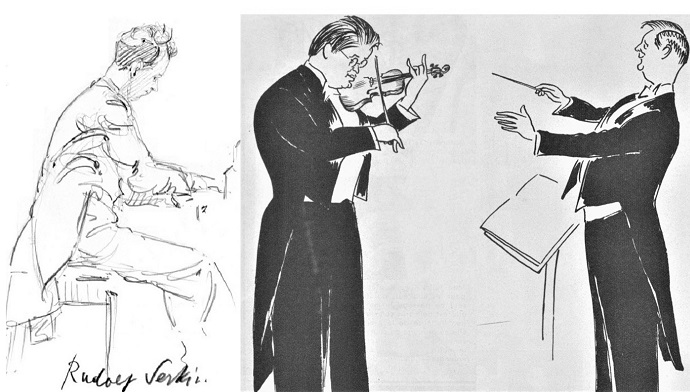
Bach Sonate n°1 BWV 1001: II Fuga – III Siciliana – IV Presto Adolf Busch, Violin – 18 January 1934
____________
Concerto n°2 BWV 1042: III Allegro assai Adolf Busch, Violin – 29 November 1934
Beethoven Concerto n°4 Op58: I Allegro moderato Rudolf Serkin, piano – 23 February 1933
Fritz Busch Radio Symfoniorkestret (Danish Radio Orchestra)
Source: Bande/Tape 38 cm/s / 15 ips
Ces enregistrements de la Radio Danoise montrent trop brièvement Adolf Busch et Rudolf Serkin sous la direction de Fritz Busch, et Adolf Busch en soliste dans une Sonate de Bach dont il manque malheureusement le premier mouvement. Dans le premier mouvement du concerto de Beethoven, Rudolf Serkin et Fritz Busch se montrent ici bien meilleurs que dans l’enregistrement de concert de Serkin avec Toscanini (NBC SO – 26 novembre 1944).
La Radio Danoise disposait de deux platines Neumann et de supports de gravure directe de très grande qualité, d’où un rendu sonore étonnant pour des captations radiophoniques en public du milieu années trente, dont les CD Danacord, beaucoup trop filtrés ne sont qu’un pâle reflet. Le caractère parcellaire des enregistrements conservés provient du fait que la Radio n’avait pas de possibilité contractuelle de réaliser des archives des concerts diffusés en direct. Ces brefs regards sur ces artistes en concert publics n’en sont que plus précieux.
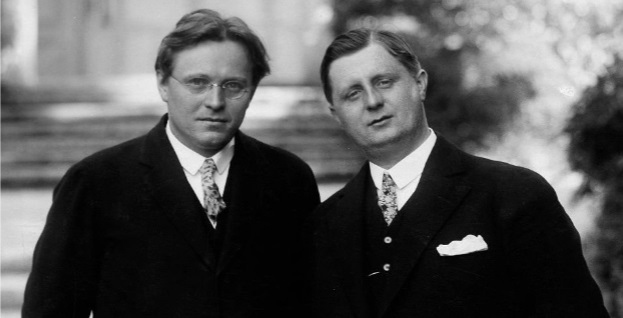
Adolf & Fritz Busch 1931
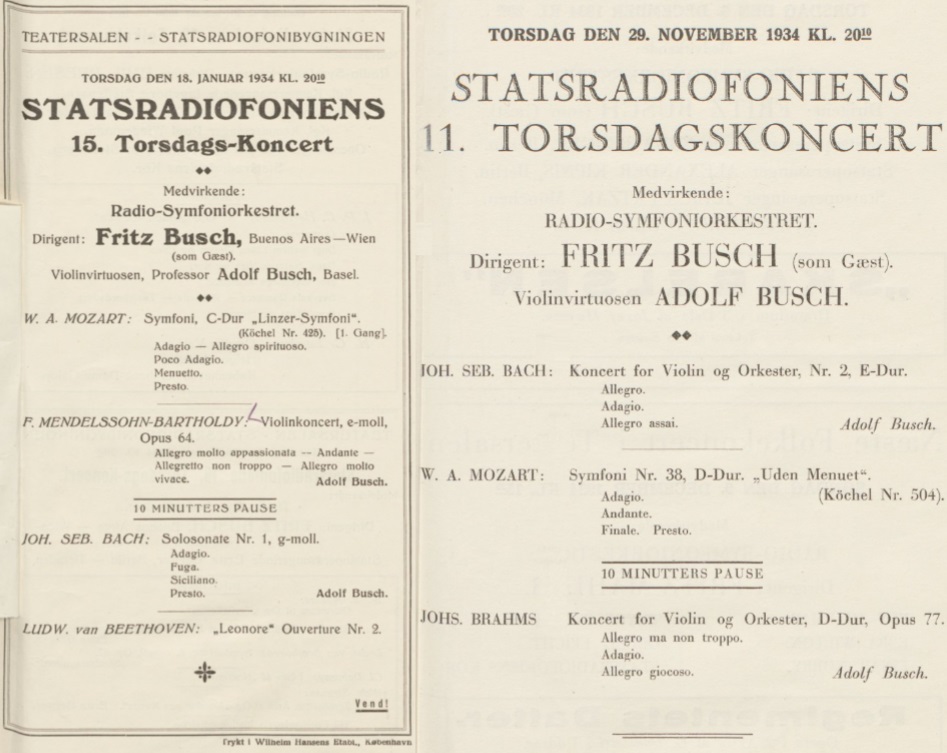
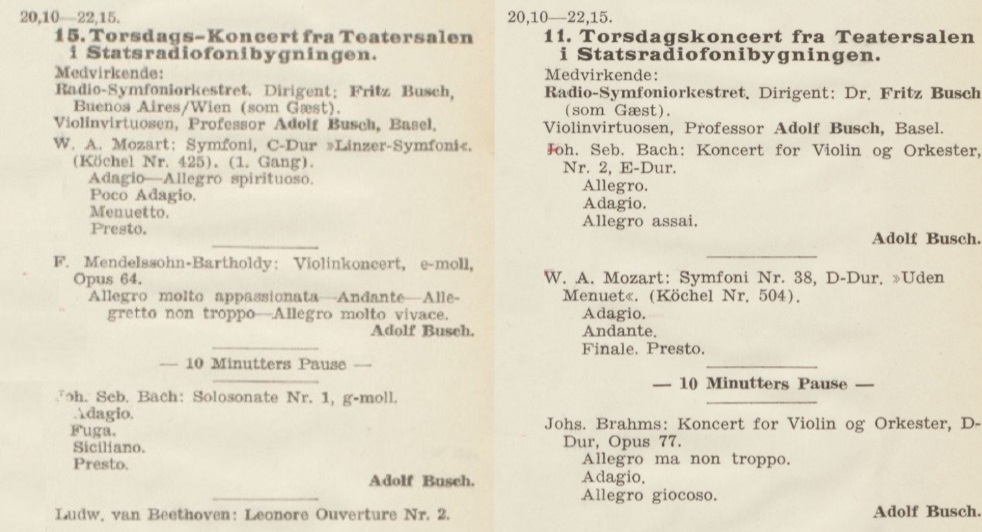
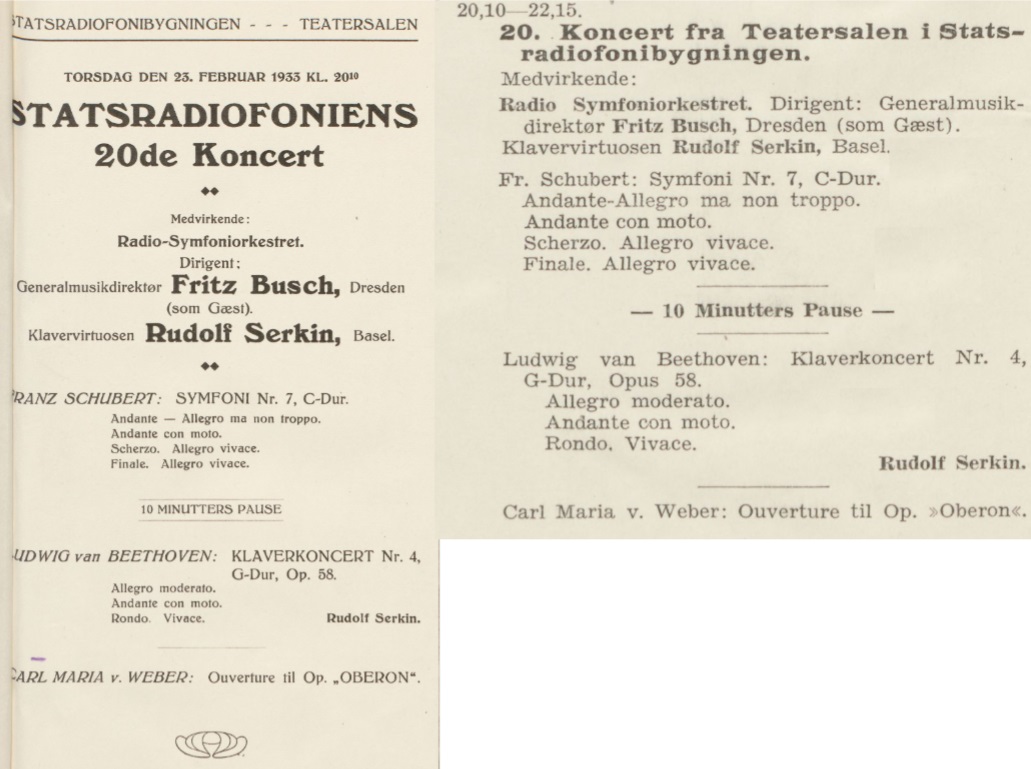
These Danish Radio recordings show Adolf Busch and Rudolf Serkin too briefly under the direction of Fritz Busch, and Adolf Busch as soloist in a Bach Sonata, the first movement of which is unfortunately missing. In the first movement of the Beethoven concerto, Rudolf Serkin and Fritz Busch are much better than in Serkin’s concert recording with Toscanini (NBC SO – 26 November 1944).
The Danish Radio had two Neumann turntables and very high quality direct recording media, resulting in an astonishing sound rendition for broadcast live recordings from the mid-thirties, of which the Danacord CDs, much too filtered, are only a pale reflection. The fragmentary nature of the preserved recordings comes from the fact that the Radio had no contractual possibility of making archives of the concerts broadcast live. These brief glimpses of these artists in public concerts are all the more precious.
Le label Maestro Editions de Richard Chlupaty (dont nous vous avons déjà présenté la publication du concert d’Edwin Fischer au Festival de Strasbourg 1953) propose une édition en CD (ME 008) des Concertos Brandebourgeois n°3 et 5 donnés au Festival de Salzburg 1950 à partir des meilleurs documents d’origine accessibles, et sans aucun traitement numérique. Par rapport aux éditions disponibles en CD, la plus-value musicale est importante.
Pour plus d’information, lire l’article en cliquant sur le lien:
furtwangler-bach-brandenburgische-konzerte-n-3-bwv-1048-5-bwv-1050-wpo/
Richard Chlupaty’s label Maestro Editions (from which we have already presented the issue of Edwin Fischer’s concert at the ‘Festival de Strasbourg 1953’) now offers a CD (ME 008) with Brandenburg Concertos n°3 and 5 given at the 1950 Salzburg Festival from the best available original documents, without any sonic processing. Musically, the improvement is important over the available CD issues.
To know more about this issue, please click on this link:
furtwangler-bach-brandenburgische-konzerte-n-3-bwv-1048-5-bwv-1050-wpo/
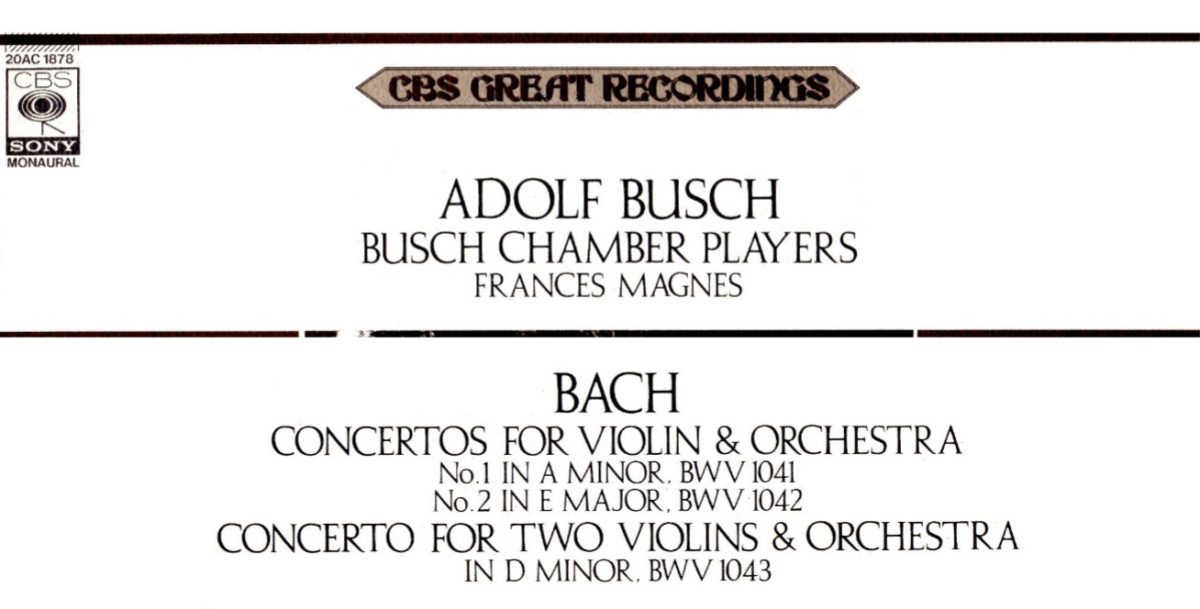
Concerto n°1 BWV 1041: New York Town Hall – March 26, 1943 (Live) Lukas Foss, piano (continuo)
Concerto n°2 BWV 1042: New York Liederkranz Hall – May 25, 1942 Artur Balsam, piano (continuo)
Concerto for 2 Violins BWV 1043 (Frances Magnes, violin II): New York Liederkranz Hall – April 26 & May 3, 1945
Source: 33t. / LP: CBS Sony 20AC 1878
Ces enregistrements nous permettent de redécouvrir le style inimitable d’ Adolf Busch dans ces concertos.
Dans les mouvements rapides, il fait un abondant usage du staccato, ce qui, combiné avec son l’énergie de son jeu et de sa conduite de l’orchestre, apporte une tension et un rebond rythmique que l’on ne retrouvera à ce point que très longtemps plus tard avec Gidon Kremer, la majeure partie des interprétations, même des plus grands violonistes, s’en tenant à un legato en général bien décevant.
Dans les mouvements lents, son style fait également merveille, comme le rapportait à propos de l’Adagio du Concerto BWV 1042 dans le New York Times du 16 avril 1942 le critique Noel Straus après le concert du 15 avril donné un peu plus d’un mois avant cet enregistrement: « Une présentation plus noble et avec plus d’âme de ce mouvement est difficilement imaginable, ni une plus remarquable pour sa pureté et sa chaleur de son ».
Il est regrettable que Busch n’ait pas eu l’opportunité d’enregistrer en studio le concerto BWV 1041, mais une captation en public réalisée en 1943 au Town Hall de New York a été conservée. Même si elle a été réalisée sur des 78 tours à gravure directe, sa qualité technique est satisfaisante, nonobstant un niveau de distorsion élevé.
Quant aux deux autres enregistrements, ils proviennent de laques 33 tours 40cm, technique que Columbia utilisait systématiquement depuis 1939 pour archiver ses enregistrements, les matrices métalliques pour les disques 78 tours du commerce étant à l’époque gravées à partir de ces laques 33 tours.

Adolf Busch
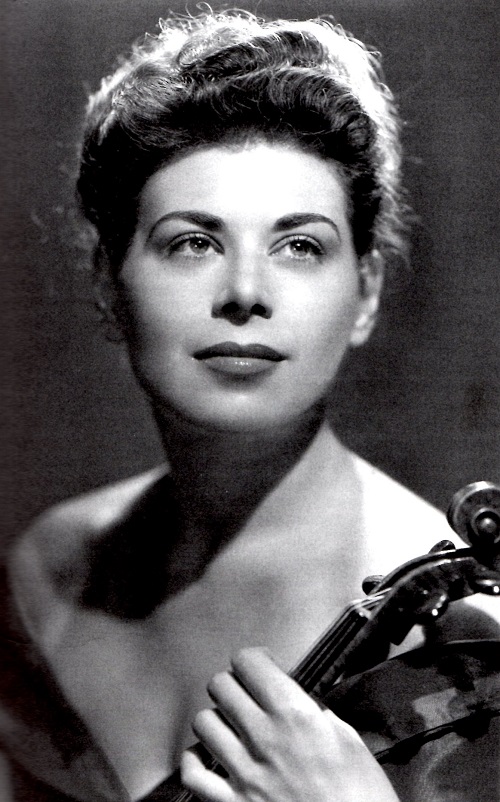
Frances Magnes
These recordings allow us to rediscover Adolf Busch’s inimitable style in these concertos.
In the fast movements, he makes extensive use of staccato, which, in combination with the energy in his playing and in his conducting, brings a tension and a rhythmic bounce which will not be found again to that extend until much later with Gidon Kremer, most of the performances, even from the greatest violonists, relying on a generally disappointing legato.
In the slow movements, his style works wonders too, as was then observed about the Adagio of the concerto BWV 1042 in the April 16, 1942 issue of the New York Times by music critic Noel Straus after his April 15 concert given a little more than a month before this recording: « A more soulful, noble presentation of this movement is not easily imaginable, or one more remarkable for purity and warmth of tone ».
It is regrettable that Busch didn’t have the opportunity of making a studio recording of concerto BWV 1041, but a live recording made in 1943 at the Town Hall of New York has been preserved. Even if it was made on 78rpm ‘acetates’, its technical quality is satisfactory, notwithstanding a high distortion level.
As to the other two recordings, they are dubbed from 33rpm 16’’ lacquers, a technique which Columbia systematically used since 1939 for the masters of its recordings, the 78rpm metal parts for the commercial 78rpm shellacks being thereafter cut from these 33rpm lacquers.
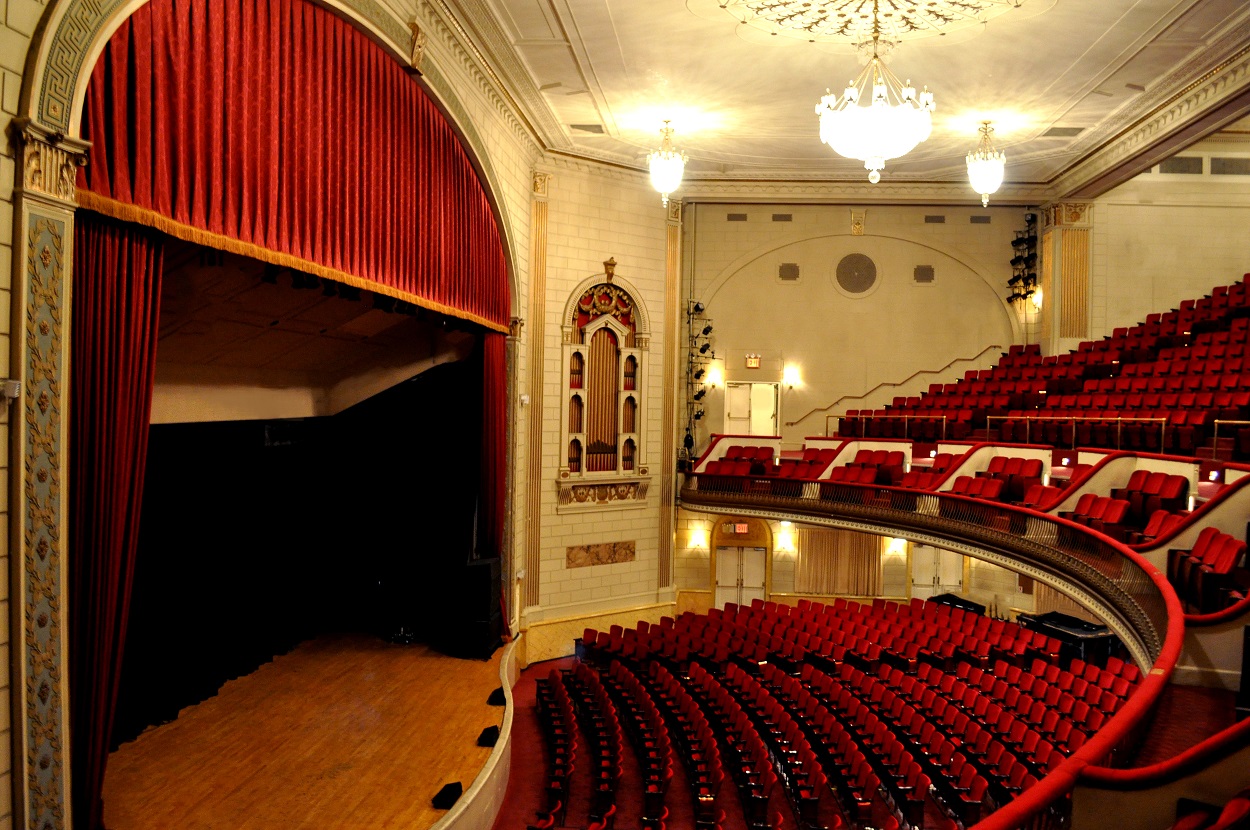
Town Hall – New York
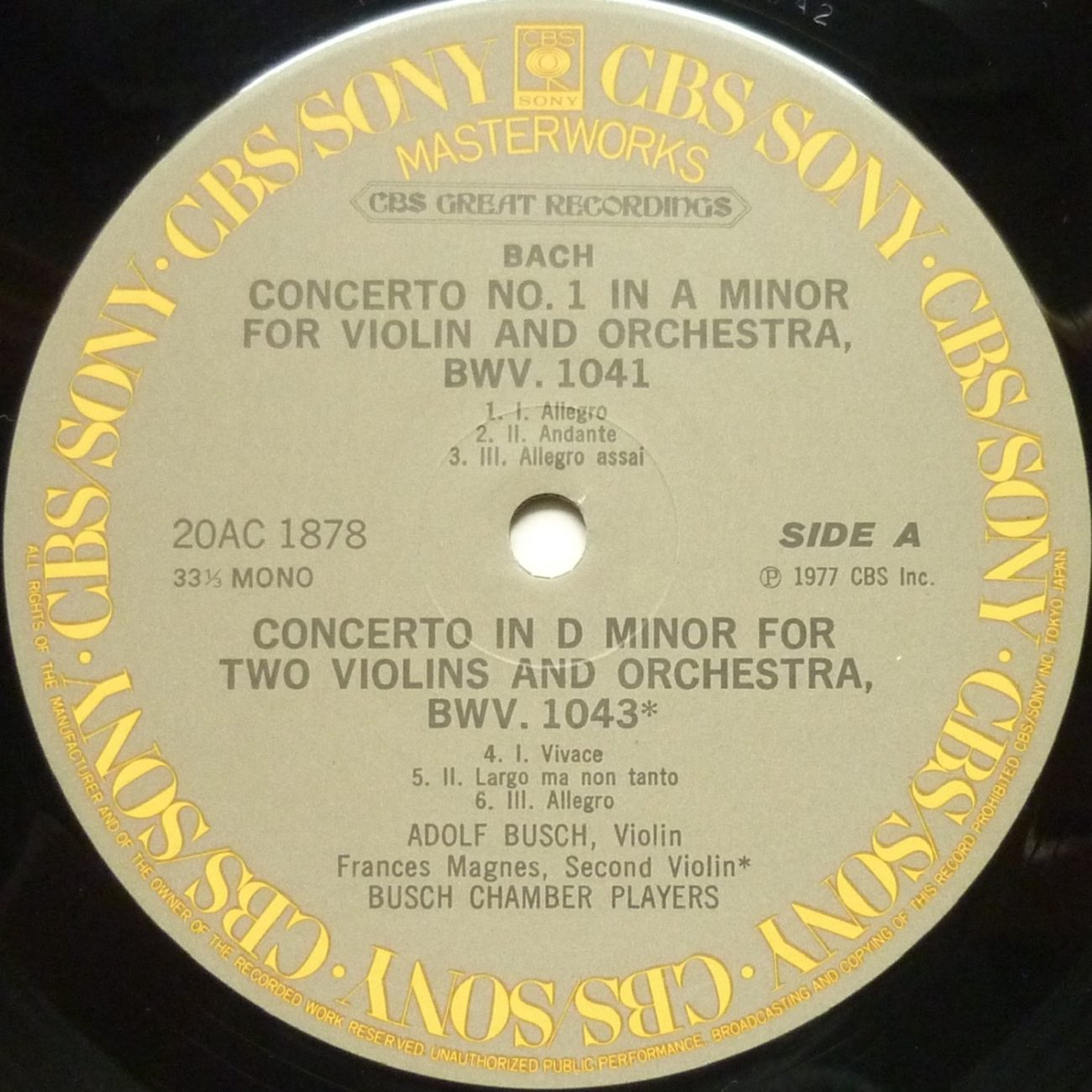
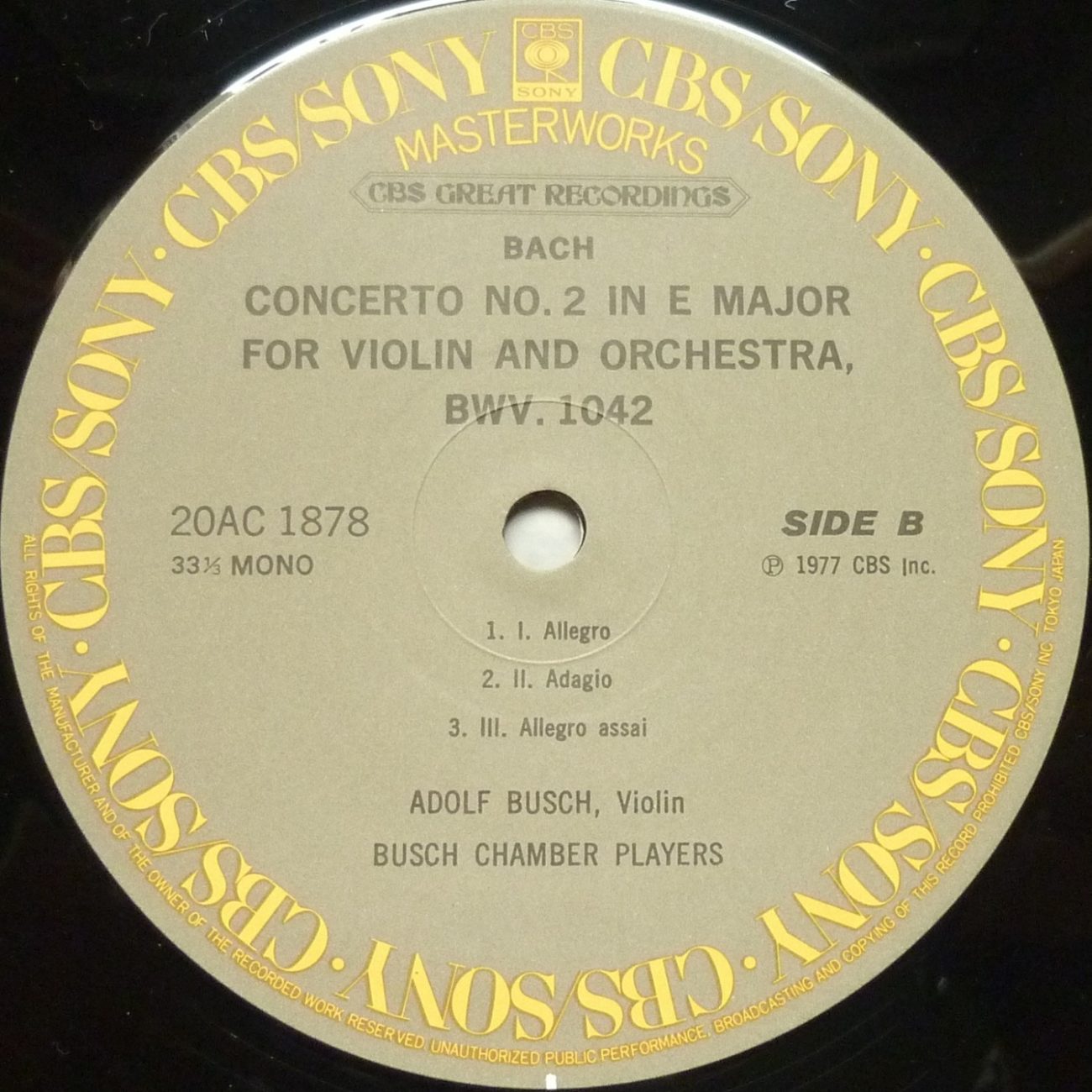

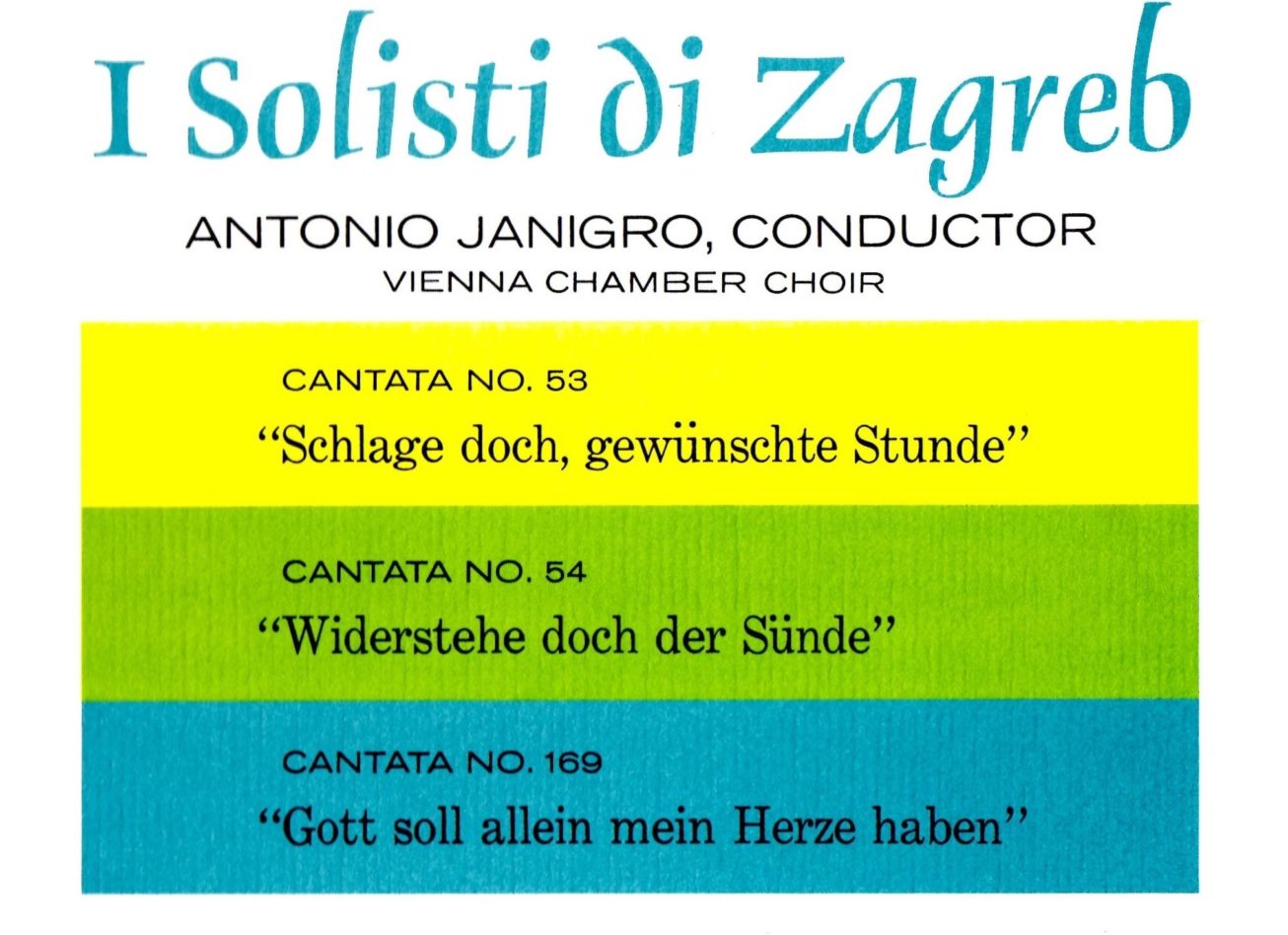
Wien Konzerthaus – June 15-17 1964 Prod: Seymour Solomon Eng: Mario Mizzaro
Cantate BWV 53: Georg Melchior Hoffmann attrib. Johann Sebastian Bach
Ces trois Cantates BWV 53, BWV 54 et BWV 169 ont été enregistrées par Maureen Forrester sous la direction inspirée d’Antonio Janigro le même mois que les Cantates BWV 35 et 42 avec Hermann Scherchen. La prestation à l’orgue d’Anton Heiller dans la BWV 169 est superbe. La prise de son, dans la grande Salle du Wiener Konzerthaus est excellente, et en particulier, la voix incroyable de Maureen Forrester sonne dans sa plénitude.
A l’époque, l’authenticité de la Cantate BWV 53 n’était pas contestée, mais depuis, les musicologues se sont accordés pour affirmer qu’elle n’était pas de Bach, le compositeur le plus probable étant Georg Melchior Hoffmann.
These three Cantatas BWV 53, BWV 54 and BWV 169 have been recorded by Maureen Forrester under the inspired conductor Antonio Janigro the same month as Cantatas BWV 35 and 42 with Hermann Scherchen. Anton Heiller’s organ playing in BWV 169 is superb. The recorded sound, in the great Hall of the Wiener Konzerthaus is excellent, and especially, Maureen Forrester’s incredible voice is heard in its fullness.
The authenticity of Cantata BWV 53 was not challenged then, but since, musicologists have agreed to consider that it was not by Bach, and that it was most probably composed by Georg Melchior Hoffmann.
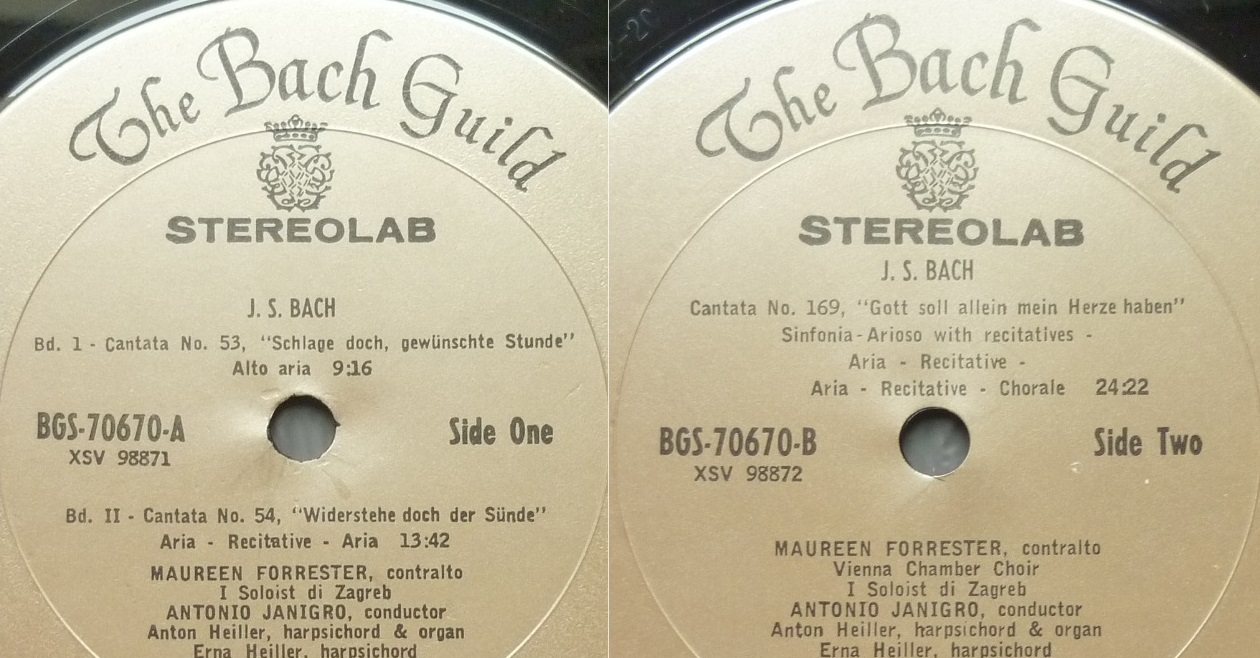
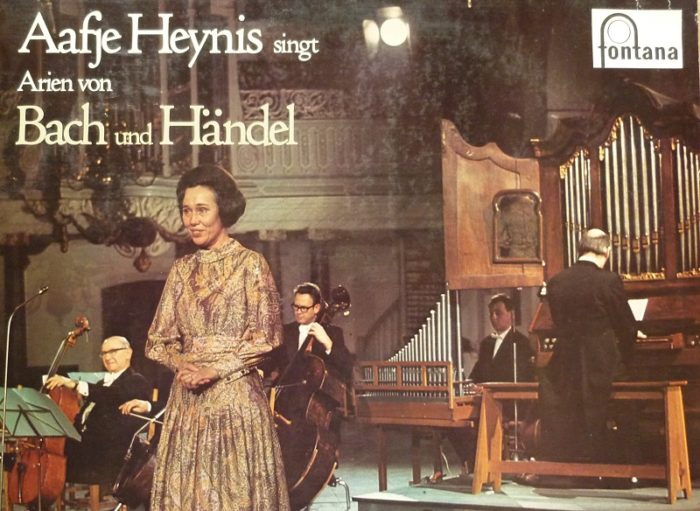
Aafje Heynis, contralto – Wiener Symphoniker (WSO) dir: Hans Gillesberger
Johann Sebastian Bach
Matthäus-Passion BWV 244: Erbarme dich (Walter Schneiderhan, violon)
Weinachtsoratorium BWV 248: Bereite dich Sion
Johannes-Passion BWV245: Es ist volbracht (Nikolaus Hübner, violoncelle)
Messe h-moll BWV 232: Agnus Dei
Georg Friedrich Händel
Messiah: He was despised – O thou that tellest
Judas Maccabaeus: Father of Heaven
Samson: Return, o God of Hosts
Wien Juli 1960 (Bach), April 1961 (Händel)
La contralto néerlandaise Aafje Heynis (1924-2015) avait un timbre qui rappelait beaucoup celui de Kathleen Ferrier avec laquelle on la confondait souvent. Elle était une interprète incomparable de Bach et de Händel, et il est étonnant que, pour ses enregistrements intégraux des Passions de Bach avec l’ Orchestre du Concertgebouw, Eugen Jochum lui ait préféré la prosaïque Marga Höffgen.
Ces enregistrements n’en sont que plus précieux. Il serait par ailleurs souhaitable que son intégrale de la Matthäus-Passion au Festival de Naarden (12 avril 1960) sous la direction d’Anthon van der Horst soit rééditée.

The voice of the Dutch contralto Aafje Heynis (1924-2015) was very similar to Kathleen Ferrier’s and she was often mistaken for her. She was an outstanding interpret of Bach and Händel, and it is astonishing that, for her complete recordings of the Bach Passions with the Concertgebouw Orchestra, Eugen Jochum chose the rather prosaïc Marga Höffgen.
These recordings are all the more treasurable. A re-issue of her complete performance of the Matthäus-Passion from the Naarden Festival (12 April 1960) under the direction of Anthon van der Horst would be highly wishable.



